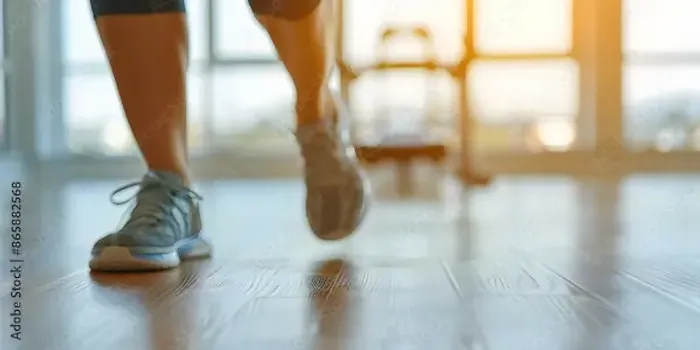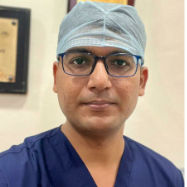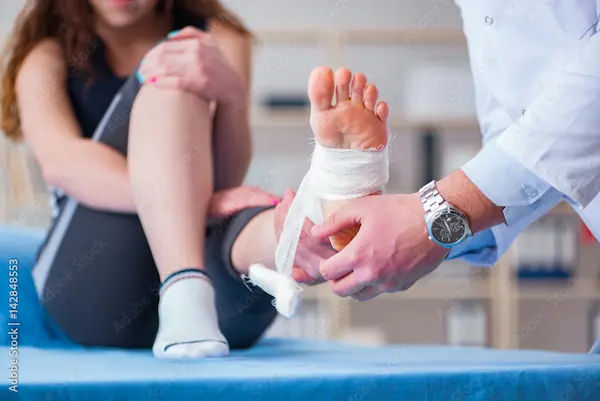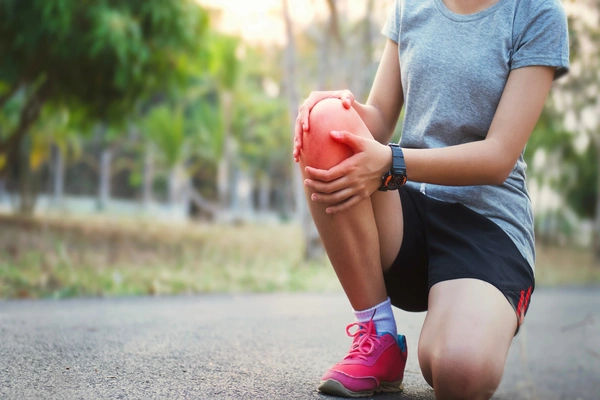Guide to Acl Rehabilitation And Return To Sports
Learn how to structure your ACL rehabilitation and return to sports with a proven step-by-step roadmap. Understand strength milestones, hop test criteria, psychological readiness, and phase-wise rehab strategies to reduce reinjury risk.

Written by Dr. Mohammed Kamran
Reviewed by Dr. Shaik Abdul Kalam MD (Physician)
Last updated on 24th Oct, 2025

Introduction
Tearing your ACL is a gut punch. One moment you are cutting and sprinting, the next you are thinking about surgery, rehab, and how long it will take to get back. The good news is that ACL rehabilitation and return to sports do not have to feel like guesswork. Today, the best programmes use clear tests, gradual progressions, and proven injury-prevention tactics to help you return safely and perform even better than before.
This guide translates the latest evidence into a step-by-step plan. You will learn what actually determines your return
(hint: it is not just time), how to navigate each rehab phase, the exact return-to-sport criteria most teams use, and sport-
specific drills to bridge the gap from clinic to competition. You will also discover how to reduce reinjury risk
significantly, along with practical tips for confidence, nutrition, and recovery.
Whether you are a weekend warrior or a competitive athlete, you will find a realistic roadmap, clear milestones, and
strategies you can use immediately. If symptoms like swelling or instability persist beyond two weeks or you are unsure
about your progress, consult a doctor online with Apollo 24|7 for personalised guidance and next steps.
What an ACL Injury Means for Your Return to Sports
The ACL stabilises your knee during rapid deceleration, cutting, and pivoting which are common in field and court
sports. Most ACL tears happen during non-contact plays such as a sudden stop or awkward landing. Some people
choose nonoperative rehab, while many opt for reconstruction when instability limits sport.
Your return is not dictated by a calendar date. It is driven by three core factors.
A. What Determines Your Return?
The following elements shape your readiness:
- Capacity: Quadriceps strength symmetry is a leading predictor of safe return. Studies from the Delaware-Oslo ACL
cohort show that achieving ≥90% limb symmetry index (LSI) for quad strength reduces reinjury risk and correlates with
better outcomes. - Control: Hop tests and movement assessments, such as single-leg landing, reveal whether you can absorb and redirect
force safely. Poor mechanics, including dynamic valgus and trunk lean, increase risk. - Confidence: Psychological readiness, measured by the ACL-RSI scale, is linked to actual return and performance. Even
when strength is restored, low confidence predicts delays and avoidance behaviours.
B. Common myths
Many athletes assume recovery is based on time alone. A common belief is:
Everyone is back by 6 months.
Evidence indicates returning before 9 months can increase second injury risk substantially, particularly in young
athletes. Time helps tissue maturation, but it is not the criterion that earns your return.
C. Unique insight
Think of return not as a single finish line but as a series of permissions you earn such as jogging, cutting, non-contact
practice, contact practice, and competition. Each is gated by tests.
Consult Top Orthopaedicians
The Phased Roadmap: From Day 1 to Full Return
Rehabilitation is best approached in structured stages.
Phase 1 (0–2 weeks): Calm and Control
Goals include reducing pain and swelling, restoring full knee extension, regaining quad activation, and normalising gait
with crutches as needed. Early extension prevents long-term stiffness. Quad sets, heel props, and straight-leg raises with
no lag are key. Use compression and elevation. Respect your graft and avoid aggressive open-chain knee extension
early if advised.
Phase 2 (2–8 weeks): Strength and Balance
At this stage, focus on building symmetrical gait and achieving knee flexion beyond 120 degrees. Introduce progressive
closed-chain strength, such as squats and step-ups, and proprioception through single-leg balance. Stationary bike, leg
press in safe ranges, and core and hip work support dynamic control. Criteria to move into the next phase often include
minimal swelling, near-normal walking, and controlled single-leg stance.
Phase 3 (8–16 Weeks): Power Foundations and Return to Running
Begin controlled plyometrics, progressing from double-leg to single-leg. Emphasise eccentric strength through slow
lowers and tempo work. Running is introduced only when strength symmetry and movement quality criteria are met.
This is often around 12–16 weeks but remains individualised. A jog-walk progression such as 1:1 intervals on level
ground minimises overload.
Phase 4 (4–6+ months): Cutting and Chaos Preparation
This is where directional change becomes a priority. Build change-of-direction mechanics using deceleration drills,
lateral shuffles, and planned cuts. Then layer in reactive cues. Progress plyometrics to include multi-directional and
depth jumps, and integrate fatigue through late-session drills. Ensure landing mechanics such as quiet feet, knee over
toes, and trunk control remain clean under speed.
Phase 5 (6–12+ months): Sport Integration and RTS Pathway
Advance from non-contact practice to full practice, then controlled competition, and finally full competition. Passing
return-to-sport criteria is your gateway. Many athletes benefit from on-field rehab sessions that simulate sport-specific
patterns at gradually increasing complexity and unpredictability.
Unique Insight
Use a green-yellow-red session rating. Mark a session green if mechanics stay crisp under fatigue, yellow if form slips
late and volume needs reducing, and red if symptoms or instability appear which signals a need to stop and regress. This
fosters self-monitoring and safer progress.
Passing Return-to-Sport Criteria: Tests That Matter
Before stepping back into competitive play, several key measures should align.
Strength symmetry (LSI ≥ 90%)
Quadriceps strength remains the primary benchmark. Many reinjuries correlate with persistent quad deficits, especially
after hamstring grafts where hamstrings may also need focused recovery.
Isokinetic testing or reliable dynamometry confirms LSI. Hamstring-to-quadriceps ratio is also valuable, particularly for
sprint and jump sports.
Hop tests and movement quality
A standard battery includes single hop for distance, triple hop, crossover hop, and 6-metre timed hop with LSI ≥ 90%.
Testing is not only about numbers. Quality beats quantity. Video your landings to check for dynamic valgus, trunk
wobble, or asymmetrical push-off. Y-Balance or similar tests can reveal lingering deficits in control.
The time factor and risk
Returning before 9 months is linked to significantly higher second-injury rates in young athletes. Failing return-to-sport
criteria such as strength or hop asymmetries also multiplies risk.
Studies suggest failing a criteria battery can increase re-tear risk fourfold or more. Conversely, meeting criteria reduces
risk and improves confidence.
What your test report should include
A comprehensive report may contain:
- Quad and hamstring strength in LSI and absolute values
- Hop test battery with video notes on mechanics
- Movement screen including squat, landing, and cutting
- Patient-reported outcomes such as IKDC and KOOS and ACL-RSI score
- Coach, physiotherapist, and surgeon consensus with agreed next steps
Unique insight
Translate test results into a colour-coded passport you share with your coach. This makes return decisions transparent
and team-supported.
Sport-Specific Progressions
Each sport places unique demands on your knee. Tailoring your drills and progressions to those demands helps bridge
the gap between rehabilitation and real-world performance.
Field and Court Sports (Football, Basketball)
Start with planned cuts at 30–45° angles, then progress to 90° movements, adding deceleration-to-reacceleration
combinations and ball-handling drills.
Use external cues such as coloured cones or coach calls to add reactivity.
- Football: Begin with rondos or limited-contact drills, then progress to small-sided games that build reactive agility.
- Basketball: Practise sequences like closeout-to-slide-to-jump to simulate game scenarios.
Running and Jumping Sports (Track, Volleyball)
Focus on eccentric control during approaches and landings to improve stability and stiffness through the ankle–knee–
hip chain.
- Volleyball: Incorporate block-to-transition footwork and approach jumps with variable set patterns.
- Track: Move from light strides to tempo runs, then to event-specific drills. Sprint athletes should emphasise hamstring
strength through exercises like Nordic curls and Romanian deadlifts.
Pivot vs Non-Pivot Sports
Sports such as cycling, swimming, and straight-line running can resume earlier due to fewer cutting demands.
In contrast, pivoting sports like football and basketball require greater control in cutting and landing, with many athletes
delaying competition until 9–12+ months even when they feel ready to reduce reinjury risk.
Reducing Reinjury Risk for the Long Term
A strong return is only part of the journey—staying healthy is the ultimate goal. Here’s how to safeguard your progress
and protect your graft.
The 9–12+ Month Principle
Time allows grafts to mature and neuromuscular control to stabilise. Research shows reinjury rates remain significantly
higher in those who return before 9 months or without passing all criteria. Most teams now advocate a 9–12+ month
timeline combined with strict performance-based testing.
Prevention Warm-Ups That Work
Structured warm-up programmes like FIFA 11+ and PEP have been shown to reduce ACL injury rates by up to 50% in
young female athletes and are equally effective for males.
Include 10–15 minutes of dynamic drills—landing mechanics, deceleration, lateral hops, and lower-body strength
work—at least three times per week for best results.
Female Athlete Considerations
Women are at a higher baseline risk due to hormonal and biomechanical factors. Prioritise hip–knee–trunk alignment,
posterior chain strengthening, and controlled deceleration.
If you had a hamstring graft, monitor hamstring symmetry closely—don’t rely solely on quadriceps strength as a
measure of readiness.
Maintenance Plan
To sustain your progress post-return:
- In-season: Do two short “micro-dose” strength sessions per week (15–20 minutes each). Focus on split squats, Romanian deadlifts, calf raises, and hops.
- Warm-ups: Always include controlled landing and cutting patterns.
- Monitoring: Use perceived exertion scales or jump metrics to track fatigue and performance consistency.
If persistent swelling, instability, or pain occur during these progressions, schedule a consultation through Apollo 24|7
to rule out issues like meniscal irritation or graft strain.
Unique Insight: Treat your warm-ups like an insurance premium—small, consistent investments that prevent costly
setbacks later.
Pitfalls, Red Flags, and When to Seek Help
Even the best rehabilitation can stall if common mistakes go unchecked. Being proactive helps prevent setbacks and
long-term complications.
Common Pitfalls
- Rushing to jog before achieving strength and control milestones.
- Focusing on recovery timelines instead of objective test criteria.
- Neglecting the non-injured leg, which can lead to strength imbalances.
Red Flags That Need Attention
- Persistent loss of knee extension beyond 2–3 weeks, which may signal cyclops lesions or stiffness.
- Recurrent “giving way” or locking, suggesting possible meniscal involvement.
- Swelling, joint tenderness, or night pain lasting over 48 hours post-training.
Whole-Person Factors
Your recovery is not just about the knee—nutrition, sleep, and recovery habits all influence tissue healing and strength
adaptation.
Low vitamin D or iron levels can delay recovery; Apollo 24|7 offers convenient home testing for these.
Aim for 1.6–2.2 g of protein per kilogram of body weight daily, evenly spaced through meals. If approved by your
clinician, creatine monohydrate (3–5 g/day) can support strength maintenance.
When to Consult
If your symptoms persist beyond two weeks, consult a doctor online with Apollo 24|7 for assessment and adjustments
to your plan. A sports physiotherapist can fine-tune your mechanics and ensure your training is aligned with your
recovery phase.
Unique Insight: Keep a brief “knee diary” noting pain, swelling, sleep quality, and confidence levels. Small trends can
highlight problems early—long before they become setbacks.
Conclusion
An ACL injury can feel like a major roadblock, but with a structured, evidence-based approach, most athletes make a
strong and lasting return. The process isn’t about speed; it’s about rebuilding your capacity, control, and confidence so your knee and mind are ready for the unpredictable nature of sport.
Follow the phased roadmap, respect strength and movement criteria, and remember: the safest returns are those earned, not rushed. Maintaining consistent warm-ups, ongoing strength micro-sessions, and honest self-monitoring reduces reinjury risk dramatically.
Should swelling, stiffness, or instability persist, reach out to a specialist via Apollo 24|7 for personalised care and guidance. A full comeback isn’t one big moment; it’s a steady series of smart choices that set you up to play stronger, longer, and with peace of mind.
Consult Top Orthopaedicians
Consult Top Orthopaedicians

Dr. Rupam Chowdhury
Orthopaedician
10 Years • MBBS, DNB (Ortho.)
Kolkata
MCR SUPER SPECIALITY POLY CLINIC & PATHOLOGY, Kolkata

Dr. Vishruta A V
Orthopaedician
5 Years • MBBS MS Orthopaedics
Bengaluru
Apollo Clinic, JP nagar, Bengaluru

Dr. Sushruth J
Orthopaedician
5 Years • MBBS, MS (ORTHOPEDICS),Fellowship in Arthroplasty,FRGUHS – Spine surgery,FIFA Diploma in Football Medicine
Bengaluru
Apollo Clinic, JP nagar, Bengaluru

Dr. Kaushik Reddy
Orthopedics-Sports Medicine
16 Years • Fellow in Shoulder & Elbow Surgery(Japan) - 2017 Fellow in Trauma, Hand & Reconstructive Surgery (Germany) - 2015 Fellow in Adult Knee Reconstruction & Sports Medi-cine(New Delhi) - 2013 M.S Orthopedic Surgery (Chennai) 20 M.B.B.S (Pune) - 2006
Hyderabad
Apollo Hospitals Jubilee Hills, Hyderabad
(325+ Patients)

Dr Vikas P Birla
Orthopedics-Sports Medicine
13 Years • MBBS, DNB, MNAMS, Fellowship in Shoulder and Sports Injury
Delhi
Apollo Hospitals Indraprastha, Delhi
Consult Top Orthopaedicians

Dr. Rupam Chowdhury
Orthopaedician
10 Years • MBBS, DNB (Ortho.)
Kolkata
MCR SUPER SPECIALITY POLY CLINIC & PATHOLOGY, Kolkata

Dr. Vishruta A V
Orthopaedician
5 Years • MBBS MS Orthopaedics
Bengaluru
Apollo Clinic, JP nagar, Bengaluru

Dr. Sushruth J
Orthopaedician
5 Years • MBBS, MS (ORTHOPEDICS),Fellowship in Arthroplasty,FRGUHS – Spine surgery,FIFA Diploma in Football Medicine
Bengaluru
Apollo Clinic, JP nagar, Bengaluru

Dr. Kaushik Reddy
Orthopedics-Sports Medicine
16 Years • Fellow in Shoulder & Elbow Surgery(Japan) - 2017 Fellow in Trauma, Hand & Reconstructive Surgery (Germany) - 2015 Fellow in Adult Knee Reconstruction & Sports Medi-cine(New Delhi) - 2013 M.S Orthopedic Surgery (Chennai) 20 M.B.B.S (Pune) - 2006
Hyderabad
Apollo Hospitals Jubilee Hills, Hyderabad
(325+ Patients)

Dr Vikas P Birla
Orthopedics-Sports Medicine
13 Years • MBBS, DNB, MNAMS, Fellowship in Shoulder and Sports Injury
Delhi
Apollo Hospitals Indraprastha, Delhi
More articles from Sports Injury
Frequently Asked Questions
Q1. How long until I can return to sport after ACL reconstruction?
Many athletes return between 9–12+ months, but only after passing ACL return to sport criteria like strength and hop test symmetry and demonstrating confident movement.
Q2. When can I start running after ACL surgery?
Often around 12–16 weeks once you meet strength/control milestones. Your clinician will confirm readiness using quad strength and movement assessments.
Q3. What tests do I need to pass before returning?
A typical battery includes quadriceps strength LSI ≥ 90%, hop test battery ≥ 90% with clean landings, satisfactory IKDC/KOOS scores, and adequate ACL-RSI (confidence) levels.
Q4. How can I reduce my risk of reinjury?
Delay competition until ≥9 months, pass all criteria, and include prevention warm-ups (FIFA 11+, PEP) and in-season strength micro-doses to maintain symmetry and mechanics.
Q5. I still have swelling and stiffness—what should I do?
Reduce intensity, focus on recovery, and address extension range. If symptoms persist beyond two weeks, consult a doctor online with Apollo24|7 for further evaluation.

